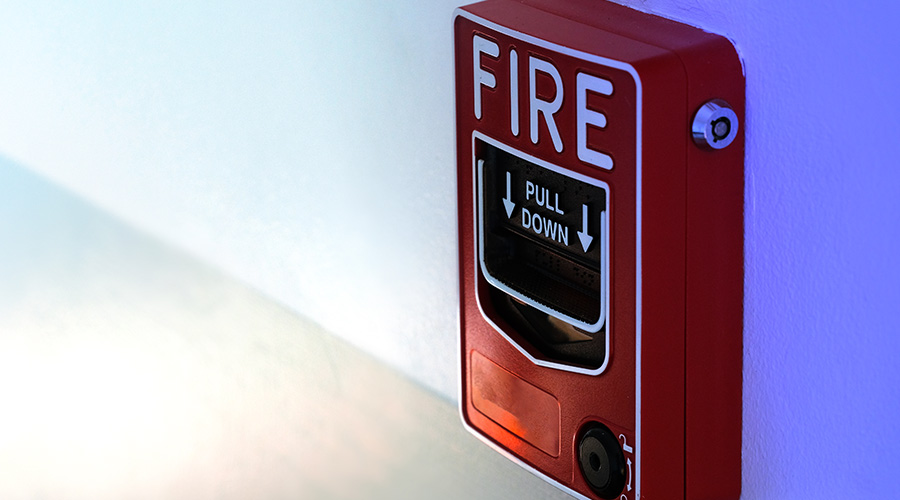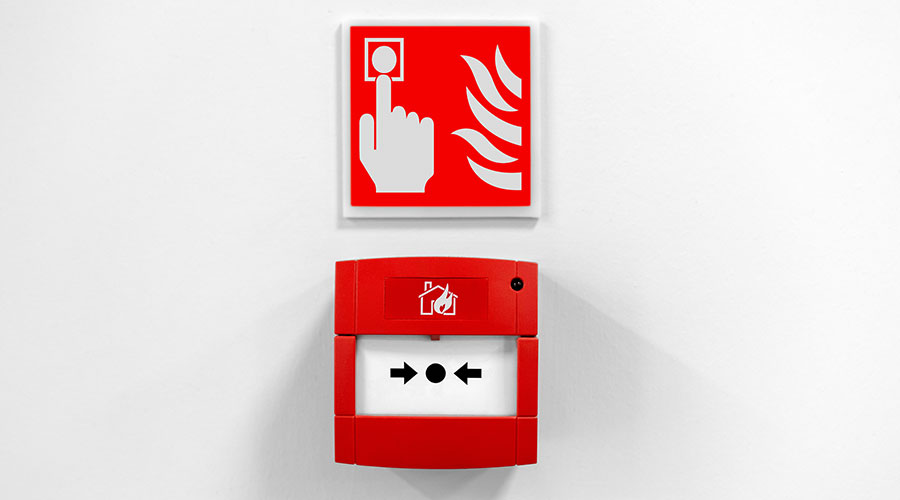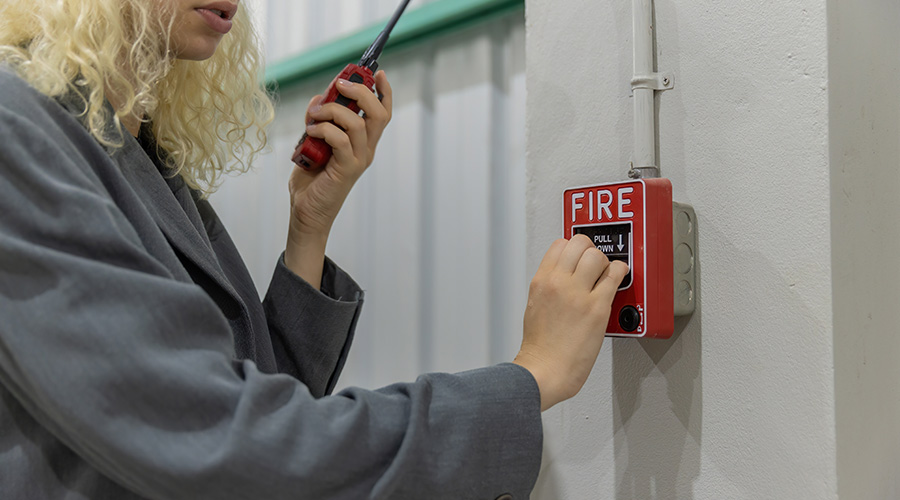New Codes Aim For Safer High-Rises
Chicago and New York prepare to comply with new rules, including expanded requirements for sprinklers
When it comes to building codes, not all cities are created equal. Code changes in cities like Chicago and New York are scrutinized by jurisdictions around the country, serving as de facto national benchmarks against which local requirements can be compared. Now, major changes are in the works in both cities, revisions to codes driven at least in part by recent events — in Chicago, a fire in a high-rise building where six people died; in New York, the attack on the World Trade Center buildings. The new requirements are likely to draw national attention to fire and life safety issues in high-rise buildings, especially the controversial topic of sprinklers in older buildings.
Chicago building owners will be faced with more than New Year’s resolutions this January. With the passage of its much-debated high-rise ordinance, Chicago joins the ranks of cities around the country requiring automatic sprinklers in all high-rise commercial buildings regardless of when they were built.
The new year also brings into effect a Chicago City Council ordinance passed in November 2003 — one month after the deadly fire in the Cook County Administration Building in which six individuals trapped in a stairwell died from smoke inhalation.
That ordinance requires all high-rise stairwell doors, except doors that open directly into a dwelling unit, to be unlocked or equipped with a fail-safe electronic lock-release system. Doors that open directly into a dwelling unit must have a self-closer and latch but no self-locking hardware. Finally, owners may be faced with adoption of a new Chicago Building Code that brings requirements more in line with the 2003 edition of the International Building Code.
“Unfortunately, it often takes a fatality or more to cause action by a governing body,” says Ken Schwartz, chief technology officer at Schirmer Engineering. “Hopefully something good comes of it, and that seems to be what’s happening here. Any time you increase a building’s level of safety, that’s a good thing.”
Sprinkler requirements
The lack of automatic sprinklers in the Cook County Administration Building became a major factor in developing the revised high-rise ordinance initiated by Mayor Richard M. Daley. According to statistics from the National Fire Protection Association (NFPA), no more than two people have ever been killed as a result of a fire, excluding explosions, in a completely sprinklered building when the system was operating properly.
The revised ordinance requires all existing commercial buildings taller than 80 feet above grade to become fully equipped with sprinklers by the year 2017 — a major change from the original ordinance, which required sprinkler systems only for buildings constructed after 1975. Installation may be completed in four-year stages, with one-third of the building being protected during each stage.
While high-rise residential and landmark buildings remain exempt from the new sprinkler provisions, such buildings instead must undergo an 18-point life-safety evaluation performed by a licensed engineer or architect. Buildings that fail to achieve the minimum safety score will have to undergo various improvements within a seven-year period.
“What this says to building owners is, ‘Budget and plan now,’” says Jeff Harper, engineering manager for the Chicago office of RJA Group. “Start early, because if you let it go until the end, it won’t be pretty. And the way the ordinance is written, they won’t be able to wait too long.”
Coincidentally, the recent fire at Chicago’s La Salle Bank building — which was deemed potentially more serious than the one at the Cook County Administration Building because the fire occurred in an older, larger structure and on a higher floor — also may prove to be influential in justifying the revised ordinance. Although the fire gutted sections of the 29th and 30th floors of the 45-story building, no one was killed in the blaze. Among the reasons that have been cited:
• Re-entry compliance that allowed several groups of tenants to escape heavy smoke in stairwells
• Improved firefighting techniques employed by the fire department
• Operation of a public-address system that helped firefighters stay in touch with tenants isolated in the building, assuring them that help was on the way and informing them of when it was safe to proceed down stairwells
• The presence of a two-way communication system in stairwells for fire department use.
“They were definitely ahead of the curve on that one,” Schwartz says of the communication system, which is not required in the revised ordinance until 2012. “And I suspect it contributed to the lack of fatalities.”
Other ordinance provisions include modifications in material and installation standards to help reduce retrofit costs. For example, newer technologies — such as plastic sprinkler piping — will be accepted for retrofit use. Similarly, use of existing fire department standpipes and water supplies will be allowed.
Chicago’s new code
New chapters on fire- and life-safety and building planning signify the first major overhaul of the Chicago building code in nearly 50 years. “We’re still ‘Chicagoizing’ the code, but it’s going to have the look, feel and smell of the model codes,” says Les Strull, senior consultant with RJA Group. Strull and Schwartz were members of the city’s building code committee.
One of the most stringent changes in the revised code will be a call for automatic sprinklers in all newly constructed buildings with a finished floor level located 35 feet or more above grade. Other notable changes include increased levels of smoke control and increased capacities for evacuation.
Revision of the Chicago building code has been in the works for several years. Following the Cook County Administration Building fire, Illinois Gov. Rod Blagojevich commissioned an independent review of the blaze. The study, conducted by James Lee Witt Associates, concluded that Chicago’s municipal code has been less stringent than the state’s adoption of the 2000 edition of the NFPA Life Safety Code in January 2002. (See box on page 29 for more on the report.)
Under provisions of the Illinois Fire Investigation Act, city codes must be on par with or more stringent than state codes. However, the report says part of the blame lies with the Office of the State Fire Marshal for not effectively informing jurisdictions of changes made to the state code.
New York code
While Chicago officials were considering changes to its city’s code, those in New York were continuing work on regulations to increase safety in their city’s buildings.
Signed into law by Mayor Michael Bloomberg at the end of June 2004 and going into effect at the end of September 2005, New York’s Local Law 26 incorporates most of the recommendations compiled by the World Trade Center Building Code Task Force.
While some of the regulations — such as the need for impact-resistant stair and elevator enclosures, or a prohibition on open-web steel joists — are direct links to the events of Sept. 11, 2001, others are more far-reaching and in line with regulations in other parts of the country.
For example, the law requires that all buildings 100 feet or taller undergo a full installation of automatic fire sprinklers by the year 2019. Within that time, owners must submit a series of affidavits to the city. In the one-year report, due to be filed no later than July 1, 2005, the owner acknowledges the need to install sprinklers. The seven-year report requires certification by an engineer or architect as to the percentage of work completed and how the remainder of the work will be handled.
The regulation does allow some hardship time extensions and partial waivers for landmark status. It also requires that structures of 100 feet or less being converted into office space undergo full sprinkler installation.
“Many of the Class A buildings here are already sprinklered,” says Roberta M. McGowan, executive director of the Building Owners and Managers Association of Greater New York. “Where it’s really going to have an impact is on smaller buildings and residential buildings. But, obviously, safety is paramount. I can’t see someone objecting to that.”
Several of the provisions of the new code deal with exit lighting, including the installation of photoluminescent signs on exit doors and markings in stairwells of high-rise office buildings of 75 feet or more, as well as a requirement for backup power for exit and direction signage.
One smaller item that catches the eye and approval of James Carrigan, associate partner and supervising engineer for Syska Hennessy Group, is the mandating of controlled inspections for fire dampers in any building that installs a new ventilation system.
“This was never subject to controlled inspection before,” Carrigan says. “Somebody actually should be looking at these things all the time to make sure they’re where they need to be and are operating as they should.”
Another area of major interest is the provision that ultimately will require commercial building owners to develop formalized emergency action plans.
At present, the New York City Fire Department is drafting specific rules, which are expected to include provisions for training building staff and implementing mandatory evacuation drills every three years.
According to Carrigan, it’s important to note that the action plan provision is for nonfire-related emergencies, which could range from a natural disaster to a terrorist attack. The city has not changed its procedures to date for fire-related situations.
“For fires in high rises, it’s a staged evacuation — not automatically clearing the building — and that has not changed,” Carrigan says.
Rzeznik, Carrigan and McGowan all stress the importance of tenant involvement, be it in the form of quarterly meetings or some other regular update.
“Openness and communication with tenants is paramount,” McGowan says. “You have to take the pulse of the building.”
Kathryn Rospond is a freelance writer with extensive experience writing about facility technology issues.
Report finds fire safety flaws: How prepared are you?
In an independent review of factors related to the Cook County Administration Building fire of October 2003, the James Lee Witt Associates Fire Review Team found 19 areas in which building management failed to adequately prepare for or respond to the situation. Following are a few of the key findings against which facility executives can compare their own emergency preparedness:
- Building management failed to develop, evaluate and implement a full evacuation plan, including determination of the roles for security personnel, building personnel and building occupants.
- Building management failed to name a deputy fire safety director with current and valid certification or other life-safety leader to share responsibilities with the fire safety director.
- Building management failed to organize quarterly evacuation drills to ensure all parties (tenants, security personnel, building management) were aware of emergency procedures.
- Building personnel incorrectly assessed the emergency situation relative to personal safety, not in terms of overall risk to building occupants.
- Building management failed to properly maintain fire and life-safety systems through scheduled service and repair.
The review also found that Chicago code was not as strict as the state code, though Illinois law mandates that local regulations be at least as tough as state requirements. Illinois had adopted the 2000 edition of the NFPA Life Safety Code in January 2000.
|
New York debates model building code
New York City is one of many municipalities deliberating adoption of one of the model building codes. While the City Council is still undecided on whether to support the NFPA 5000 Building Code or the International Building Code, the idea of supporting one of the codes has much support.
“The New York City Building Code, for those of us who have to use it, is overly complicated,” says Mike Rzeznik, manager of the New York office of Schirmer Engineering. “There are many areas that are written poorly or where it is difficult to determine what the goal is.”
Rzeznik anticipates adoption of some revised version of the International Building Code. “It’s the basis for the New York State code and the New Jersey code and slated for adoption sometime soon for Connecticut,” he says. “It’s becoming the standard in the region.”
Advocates of the NFPA code include two of the leading fire service organizations in the New York City — the Uniformed Fire Officers Association, Local 854; and the Uniformed Firefighters Association, Local 94.
Roberta M. McGowan, executive director of BOMA of Greater New York, recently testified before the New York City Council on behalf of BOMA. She spoke in favor of the IBC, contending that IBC is easier to amend for local laws, such as New York’s recently enacted Local Law 26 for building safety.
|
Related Topics:











